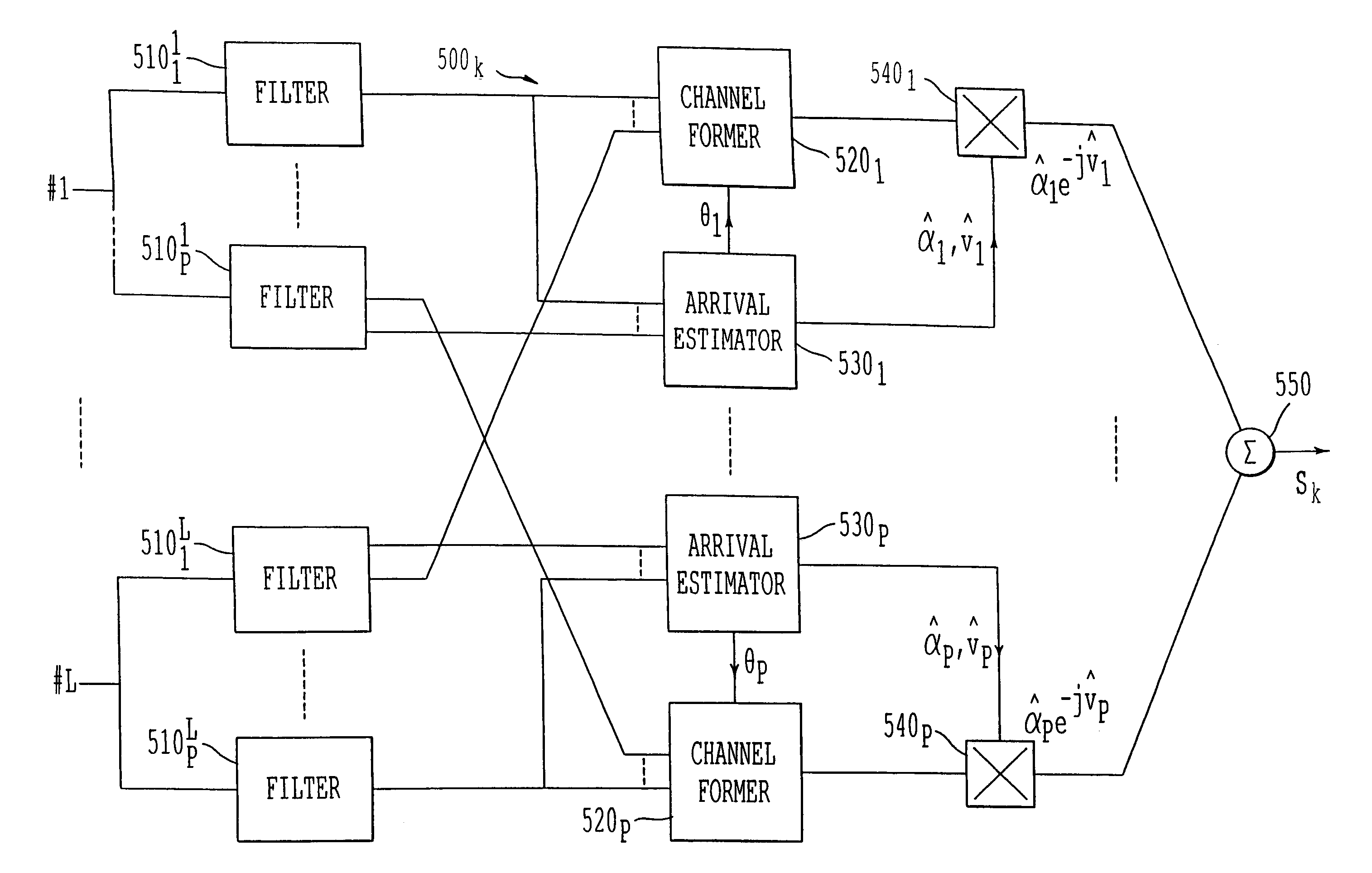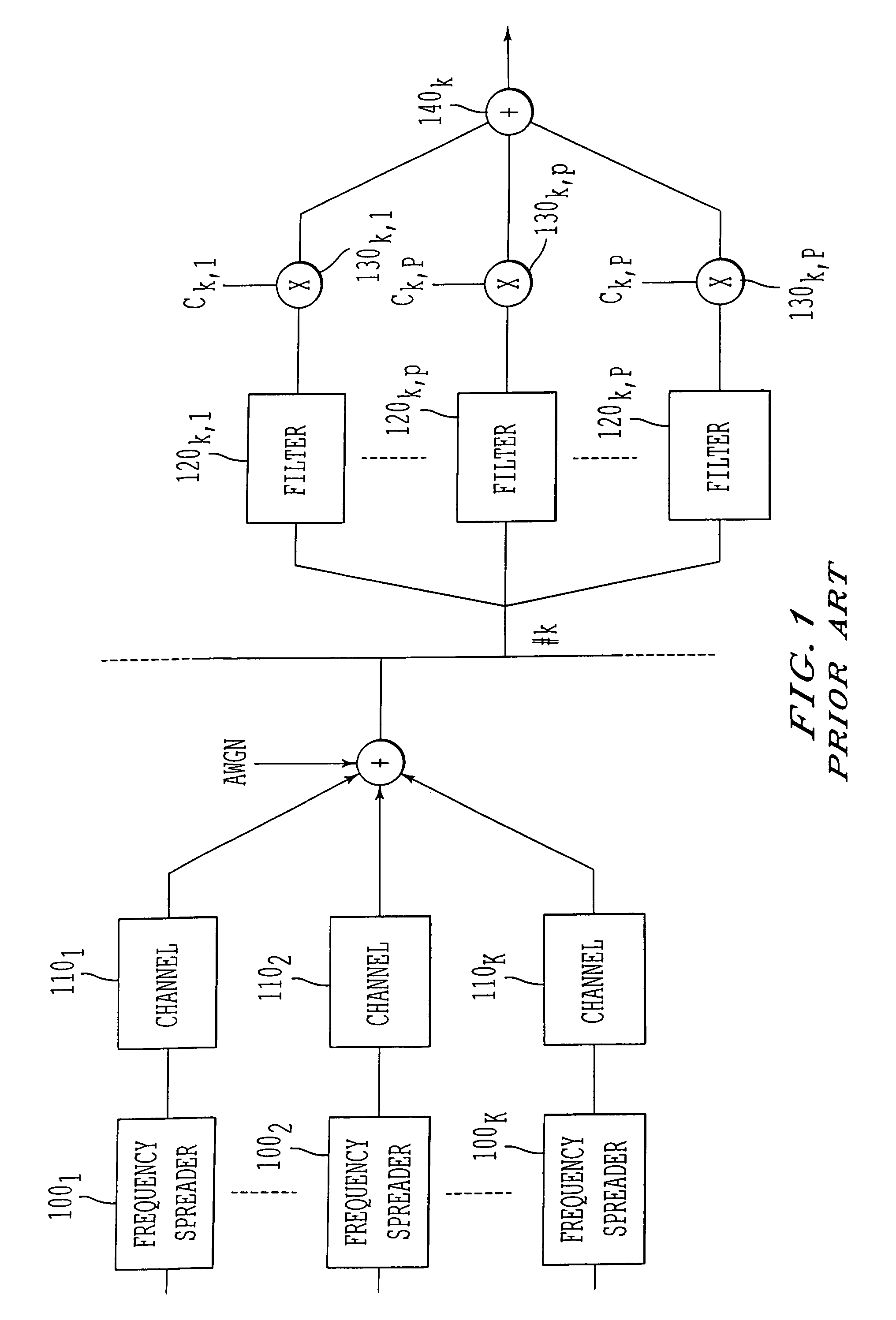Multi-user detection method
a detection method and multi-user technology, applied in the field of multi-user detection, can solve the problems of multi-path interference, large interference with detection, incomplete separation, etc., and achieve the effect of improving the elimination of multi-user interference, simple and precis
- Summary
- Abstract
- Description
- Claims
- Application Information
AI Technical Summary
Benefits of technology
Problems solved by technology
Method used
Image
Examples
fourth embodiment
[0083]FIG. 9a depicts a multi-user detection device according to the invention.
[0084]This embodiment extends the parallel elimination mode in the sense that it now includes a “multi-equalisation” function which will be explained later. The reference numbers indicated are equivalents to those of FIG. 6 when they correspond to identical functions. The device depicted in FIG. 9a nevertheless differs from that in FIG. 6 in that it comprises a linear filter (905) upstream of the decision modules (910k). The purpose of this filtering is to take into account the outputs of the receivers of the rake type (900k) at different sampling times in the elimination of the interference. The filter (905) is a transverse linear time filter which fulfils a role equivalent to that of a conventional transverse linear equaliser when a single user is considered. Unlike the latter, however, the filter (905) is a matrix filter which operates on vectors of size K and therefore uses matrices of size K×K instea...
fifth embodiment
[0086]FIG. 10 depicts a multi-user detection device according to the invention.
[0087]This embodiment transposes the technique of equalisation by decision feedback (DF) to the multi-user context. The modules (1000), (1010), . . . (1080) are modules identical to the modules (900), (910), . . . , (980) of FIG. 9, each module operating, as stated, on a vector with K components. The module corresponding to 960 has been depicted here in two parts (1061) and (1062) in order to separate the modulation function (1061) from the spectral spreading function (1062). The device comprises a precursor transverse filter (1005) identical to the filter (905) and a postcursor filter (1007) filtering the reinterleaved and remodulated output of the module (1061). The output of the postcursor filter (1007) is subtracted (at 1006) from the output of the precursor module (1005) and the result is provided as an input to the decision module (1010). The assembly consisting of the transverse filter (1005) and f...
PUM
 Login to View More
Login to View More Abstract
Description
Claims
Application Information
 Login to View More
Login to View More - R&D
- Intellectual Property
- Life Sciences
- Materials
- Tech Scout
- Unparalleled Data Quality
- Higher Quality Content
- 60% Fewer Hallucinations
Browse by: Latest US Patents, China's latest patents, Technical Efficacy Thesaurus, Application Domain, Technology Topic, Popular Technical Reports.
© 2025 PatSnap. All rights reserved.Legal|Privacy policy|Modern Slavery Act Transparency Statement|Sitemap|About US| Contact US: help@patsnap.com



